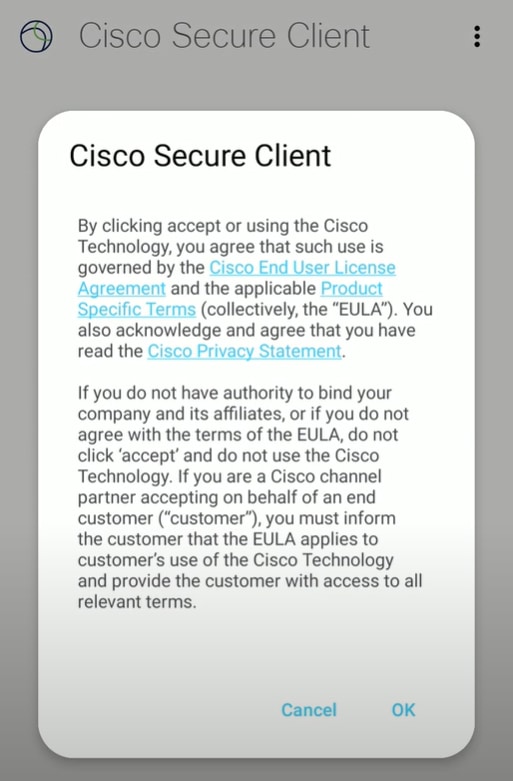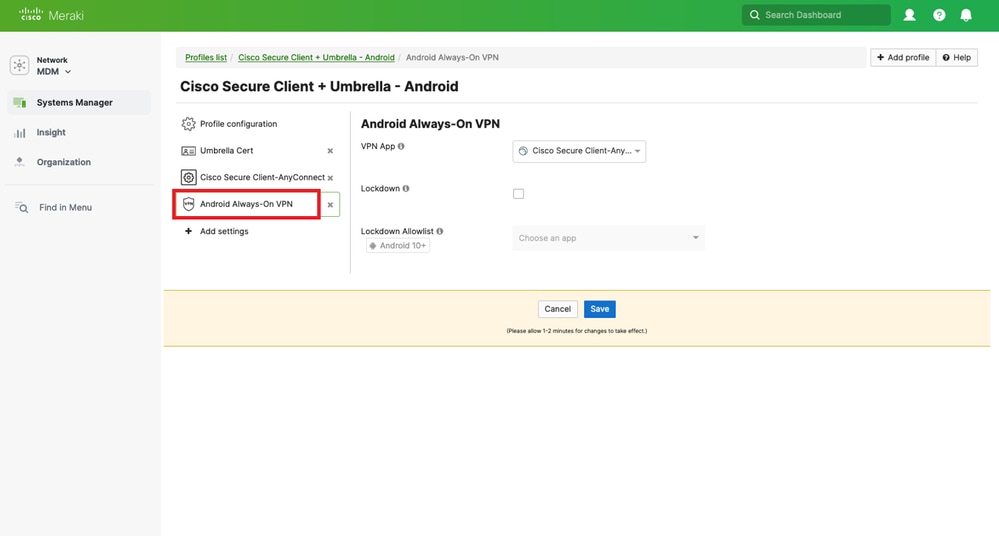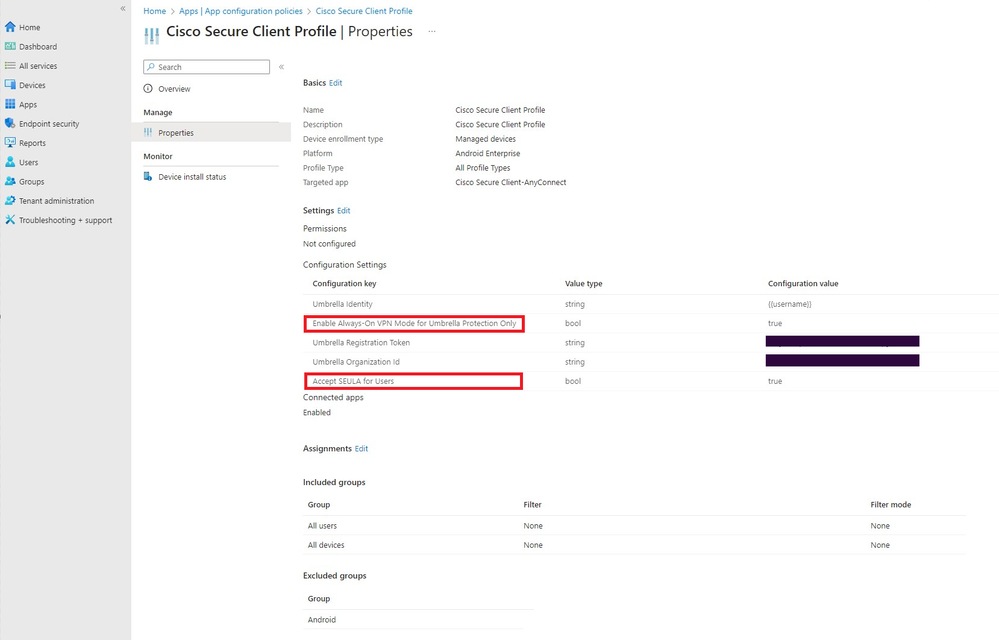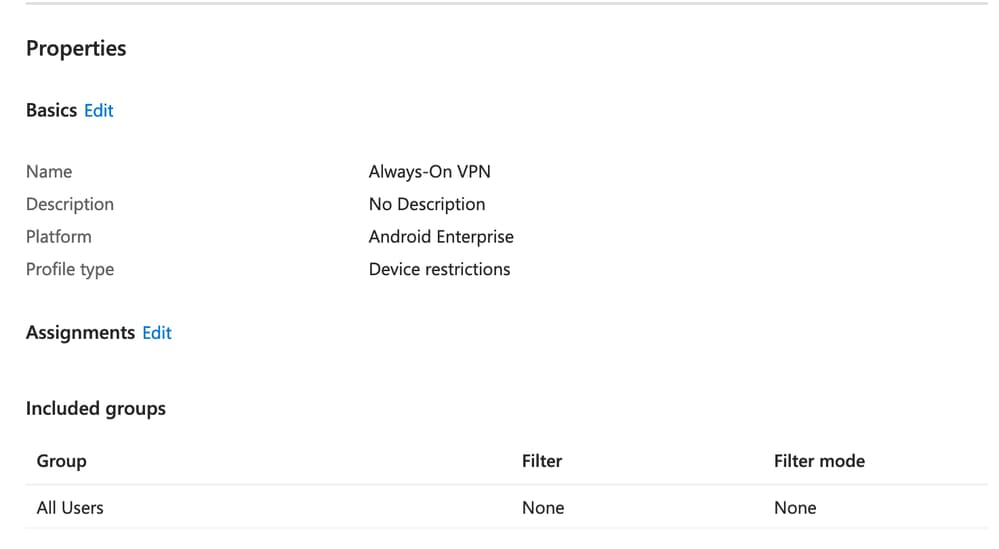Introduction
This document describes how to configure Cisco Secure Client to automatically accept VPN and SEULA prompts to manage pop-ups.
Overview
You can configure Cisco Secure Client to launch automatically and accept essential VPN and SEULA (Software End User License Agreement) pop-up prompts without user interaction on Android devices using MDM solutions such as Cisco Meraki and Microsoft Intune. By enabling Always-On VPN and setting the SEULA acceptance property in your MDM, you eliminate the need for users to respond to VPN connection and SEULA pop-ups during initial deployment.
Settings Impacting Initial Launch
-
VPN Connection Request for Umbrella:
- The device must accept a connection request for Umbrella protection to start.
- You can auto-accept this by enablingAlways-On VPNin your MDM configuration.

-
SEULA Acceptance:
- The SEULA agreement must be accepted for the app to function.
- Set the
accept_seula_for_userproperty key totruein the Managed App Configuration in your MDM.

Configure Auto-Accept in Cisco Meraki MDM
Complete these steps for a fresh Android installation:
-
Configure and deploy the Cisco Secure Client application in your MDM.
-
EnableAlways-On VPNin MDM settings (do not enable Lockdown).
- If Lockdown cannot be disabled, Always-On VPN must also be turned off.

-
Push the Cisco Secure Client configuration properties to the application.
-
Verify installation and the VPN connection status (look for the key icon in the notification panel).
-
Test access to blocked websites to confirm Umbrella policy enforcement. Use a browser within the work profile for testing.
- Enable "Always-On VPN for Umbrella protection only" by setting the
vpn_always_on_umbrella_onlyproperty.
- Use this setting if Umbrella is your only VPN.
- If using other VPNs, enable "VPN Always On" without restricting to Umbrella.
-
Enableaccept_seula_for_userto auto-accept the SEULA agreement. This is independent of the Always-On VPN setting.


Important: If you launch the app before pushing the Always-On VPN configuration, the VPN connection request pop-up will still appear. Ensure Always-On VPN is configured and pushed before first launch to prevent this.
Configure Auto-Accept in Microsoft Intune
-
Create a VPN profile and a device restrictions profile with the Always-On VPN setting enabled.
-
Assign these profiles to your target groups.
-
Select a VPN client that supports Always-On. You can choose either "Cisco AnyConnect" or specify a "Custom" client by entering the package ID of the app in the Google Play store as "com.cisco.anyconnect.vpn.android.avf" (Cisco AnyConnect VPN application specifically for Android devices).

-
Set the SEULA acceptance property and Always-On VPN.















 Feedback
Feedback